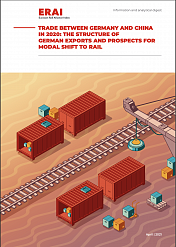The Red Sea links the Indian Ocean with the Mediterranean and serves as an important trade route for Asia, Europe, and Africa. However, this strategic waterway faces ongoing geopolitical tensions and security issues. Hostile acts against vessels, including oil tankers and cargo ships, have raised concerns over maritime safety and potential environmental and economic impacts. These events have constrained container traffic, increased transit times and shipping costs, and disrupted global commerce, supply chains, trade, and development.
The Red Sea shipping crisis calls for a united effort from the international community and regional players. One key strategy is to upgrade land transportation networks, infrastructure, and policies across the Central Asia Regional Economic Cooperation (CAREC) region. The untapped shipping capacity, along with reliable express container rail and truck services along the CAREC region’s transport corridors, could help counter current challenges testing global supply chain resilience.
Navigating the Red Sea has become increasingly challenging due to persistent Houthis attacks on vessels transporting goods to Europe from various parts of the world. As a result, containership traffic through the Bab-el-Mandeb Strait fell by 67% in June, with more vessels opting for Africa’s Cape of Good Hope. This longer route led to an estimated 30% increase in transit times from the People’s Republic of China (PRC) to Europe. Combined with delays from the drought-affected Panama Canal, global container shipping capacity dropped by around 10%, prompting vessel operators to raise shipping rates in all trade lanes worldwide.
The CAREC Program, launched by the Asian Development Bank (ADB) in 2001, fosters collaboration and connectivity among 11 member states: Afghanistan, Azerbaijan, PRC, Georgia, Kazakhstan, Kyrgyz Republic, Mongolia, Pakistan, Tajikistan, Turkmenistan, and Uzbekistan.
One of the core goals of the Program is establishing six expansive multimodal transport corridors that strengthen linkages between CAREC members, extending into the Middle East, Europe, and South Asia. This network includes 30,000 kilometers of roads and railways, along with ports, airports, and customs facilities.
Despite ocean freight rates tripling or quadrupling, train costs have risen less steeply. Container traffic on CAREC Corridor, covered by the Eurasian Rail Alliance, has grown significantly, with June 2024’s TEU volume 142% higher than the monthly average from October to December 2023, before the crisis.
A notable example of express container service is the PRC-Europe Xian-Hamburg. Based on the CAREC Corridor Performance Monitoring and Measurement (CPMM) tool which tracks the time and cost of moving goods along CAREC transport corridors, the average journey without border delays was 236 hours (9.8 days) in 2024, close to the pre-crisis level of 234 hours in 2019. Including border delays, it was 269 hours (11.2 days), still far faster than the sea route, which can take up to 30 days.
As the Red Sea becomes increasingly unsafe, it is crucial to promote CAREC corridors as viable alternatives.
«How CAREC Corridors Can Help Alleviate the Shipping Crisis in the Red Sea.» 2024. Development Asia. November 26, 2024. https://development.asia/insight/how-carec-corridors-can-help-alleviate-shipping-crisis-red-sea.




